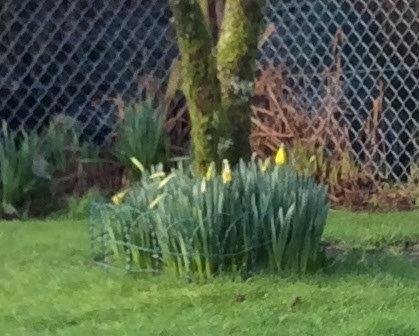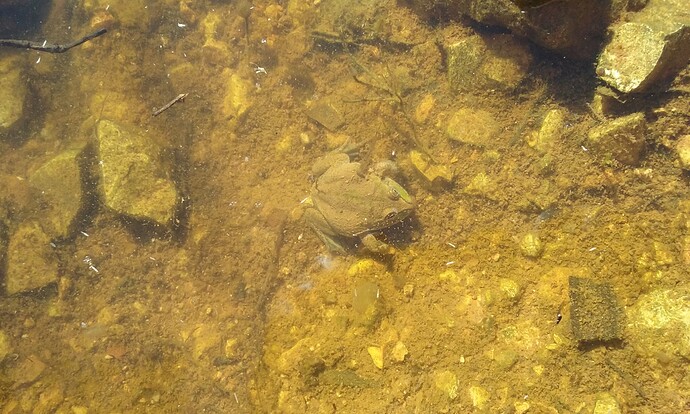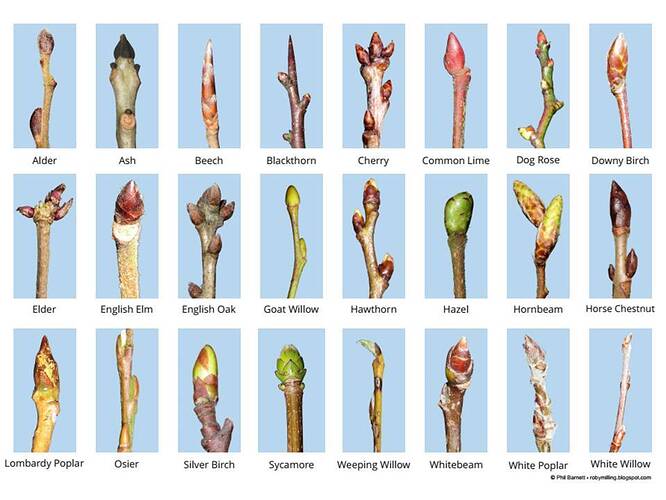Yes, you’re absolutely right - and a good reminder (for me especially!)
Problem - is it that cold? Not here!
The bird records indicate various figures (nation wide) of green finch population being down by half a million plus over the last 10 years.
The disease is transmitted on contaminated food, this can happen at bird feeders, but as well in the spring males pass food to females as part of courtship and they feed their young on regurgitated seed, so one infected parent leads to a complete family failure.
This is no doubt, not the whole answer, and there are down trends in some wildlife for which i have yet to meet anyone that can think of a rational reason.
Cheers J.P.
The earliest ever we’ve had, not just since I moved up here in 2003, but since Janet came here in the 50s!

my usual inability to focus, but you can see we’ll have more than one to say ‘Croeso’ to Gwyl Dewi!!
We have daffodils blooming also - about a month early for us! I’ve NEVER had daffodils for St. David’s Day before!
Heddiw - today.
Ychydig o cennin pedr - a few daffodils.
Mae’r blodyn draenen ddu wedi dechrau ymddangos - the blackthorn flowers have started appearing.
Cheers J.P.
Tis is a picture of a burrowing frog. Dispite the other image shoving the area as real dry (though it was green where the emus were) there is still water in some of the creeks and rockholes. These frogs come out after rains and breeed before burying themselves again, often for several years during the dry periods I always find it amazing when they turn up as these creeks are usually dustbowls and totally dry!!
Mae’n ddrwg i fi, un moyn neidr ifanc (neidr brown). (ddylwn i ymafa ysgrifennu yn gymreag)
Sorry one more, this is a juvenile (snake likely a brown snake) crossing the tack.
Efo’r ganwyn ar y ffordd here’s a nice identification guide for buds
The original high resolution version of this can be found here: http://abcissa-websites.co.uk/download/buds.pdf
My thanks to Wytham Wood (https://twitter.com/WythamWoods1 ) for this
Wow! That is certainly some tadpole! How big are the adults?
not much larger actually
Very handy bud guide. I’m hopeless with trees unless they have leaves! Dwi’n anfedrus 'da coed heb dail.
@ramblingjohn and any other experts - would the above be an English Oak as opposed to a Cork Oak or should I check if our baban is an English or Scottish Oak? And if they are the same, why not British Oak??
A good question @henddraig! A quick recourse to the web has come up with this mix of info from Wikpedia and the Woodland Trust:
- Quercus robur, commonly known as pedunculate oak or English oak … is native to most of Europe west of the Caucasus.
- Quercus petraea, commonly known as the sessile oak or durmast oak,is a species of oak tree native to most of Europe and into Anatolia and Iran -so-named because, unlike the English, or pedunculate oak, its acorns are not carried on stalks (peduncles) but directly on the outer twigs (sessile). It is the official national tree of Ireland and also an unofficial emblem in Wales and Cornwall. It is commonly located in hilly regions.
So, despite growing in very wet land, our baban is probably English, as Scotland wasn’t mentioned for petraea. I haven’t seen its acorns, assuming it’s old enough to have them. I’ll have to ask Janet to look for them in the Autumn and see if they grow on peduncles!
It certainly grows in Scotland - this is from the Scottish Wildlife Trust website:
Sessile Oak is a tall tree that can mainly be found in semi-natural woodlands, especially in the north and west of the UK. … It can form quite dense, single-species woodlands when left to grow, but is not as ubiquitous as the English Oak in the rest of the countryside. Sessile Oak timber is not as popular as that of English Oak, but is used for barrel- and cask-making - it gives wine and spirits a particular flavour.
The Sessile Oak can be distinguished from the English Oak by its taller, narrower shape and by the lack of stalks on its acorns.
Distribution - More common in the north and west of the UK, particularly in the uplands.
Where to see them - Ayr Gorge Woodlands, Balgavies Loch, Blackcraig Wood, Brock Wood, Carstramon Wood, Garrion Gill, Knowetop Lochs, Lower Nethan Gorge, Pease Dean, Southwick Coast, Stenhouse Wood, Upper Nethan Gorge, Woodhall Dean
Oh dioch, but our baban is anything but tall and slim!!
I’m no expert, but here we go with names again (the Latin is best but not always definitive).
The term English oak could refer to several species.
I’m not sure if there are any Cork oaks in Britain.
J.W. has done a great job of presenting information, Through the year i will try to find examples of pendunculate and sessile oaks to put on this thread.
We have a curious problem here in that there are clearly the galls caused by a certain species of insect that is know (so the books say) to hop species of tree for two different generations throughout the year.
From our ordinary oaks it is supposed to hop to the Turkey oak, yes great information until i ask local knowledgeable people (so where are the Turkey oaks). We don’t know, never seen one etc.
I wonder if these insects are over wintering on Holme Oaks which we do have (they are evergreen oaks). i have no evidence to support this idea, just fishing for answers !.
It’s young and perhaps not growing in a fast growing environment which leads many species to be small and rounded (see Eskimos or Svalbard reindeer).
Cheers J.P.
Oh, I totally understand! Now, today, only just in March, looked out and saw… in the front garden
sorry it’s so small, I was trying to enlarge the Camellia flowers and ended up with this!



